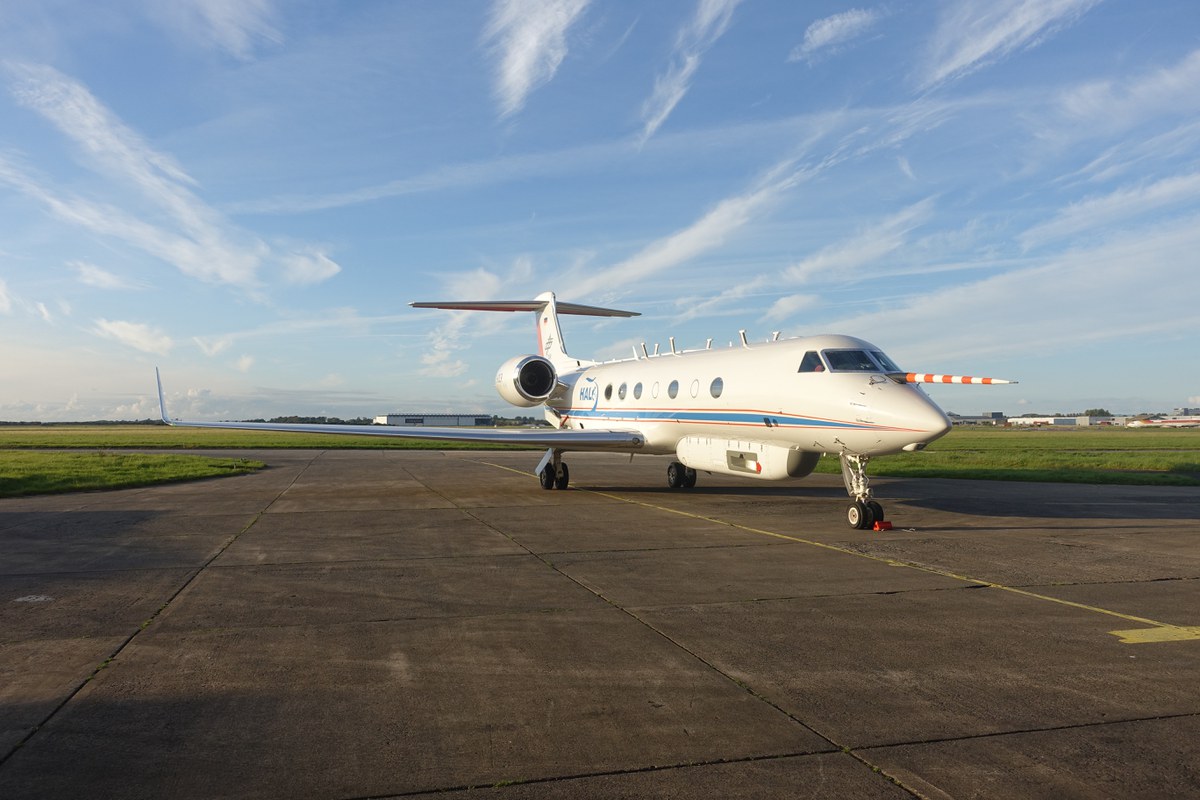HALO
The research aircraft HALO (High Altitude and Long Range Research Aircraft) provides an excellent combination of high flight altitude and long range for inves- tigations of climate processes in the UTLS. ICE-4 substantially contributed to HALO missions such as TACTS (Transport and Composition in the UT/LMS), ACRIDICON-CHUVA (Tropical Deep Convective Clouds and Precipitation over Amazonia), ML-Cirrus (Formation, Lifetime, Properties and Radiative Im- pact of Mid–Latitude Cirrus Clouds), POLSTRACC (Polar Stratosphere in a Changing Climate), GW-LCYCLE (Gravity Wave Life-Cycle), ESA ́s GWEX (gravity wave experiment, coordinated by ICE-4), and SALSA (Seasonal- ity of Air mass transport and origin in the Lowermost Stratosphere using the HALO Aircraft). Further campaigns are the WISE mission (Wave-driven Isen- tropic Transport, coordinated by ICE-4 and the University of Mainz) in 2017, the SouthTrac mission in 2019 to investigating the composition and transport of the UTLS in the southern hemisphere, the Cirrus-HL campaign to probe the properties of High–Latitude Cirrus Clouds, PHILEAS (Probing High Latitude Export of air from the Asian Summer Monsoon coordi- nated by ICE-4 and University of Mainz) in 2023 coordinated by ICE-4 to probe the the influence of the Asian Summer Monsoon on the extra-tropical lower stratosphere and the recent campaign ASCCI ("Arctic Springtime Chemistry-Climate Investigations").
The in-situ instrumentation for HALO consists of a hygrometer and a trace gas instrument.
- FISH
The Lyman-α hygrometer FISH (Fast In-situ Stratospheric Hygrometer) is one of the most advanced and sensitive in-situ instruments world-wide for mea- suring water vapor in the UTLS. This climate-sensitive region has the lowest water vapor concentrations, making it a particular challenge for measuring in- struments. For almost three decades the instrument was flown on many different research aircraft and places around the world and measured water vapor and the ice water content of cirrus clouds. - AMICA
The Airborne Mid-Infrared CAvity enhanced spectrometer (AMICA) is a newly developed spectrometer that will carry out high resolution carbonyl sulfide (OCS) measurements during aircraft campaigns to improve our understanding of the contribution of OCS to the stratospheric aerosol layer. It uses the Off-Axis-Integrated-Cavity-Output-Spectroscopy (ICOS) measurement technique to determine OCS, CO2, CO, CH4 and tropospheric H2O.

